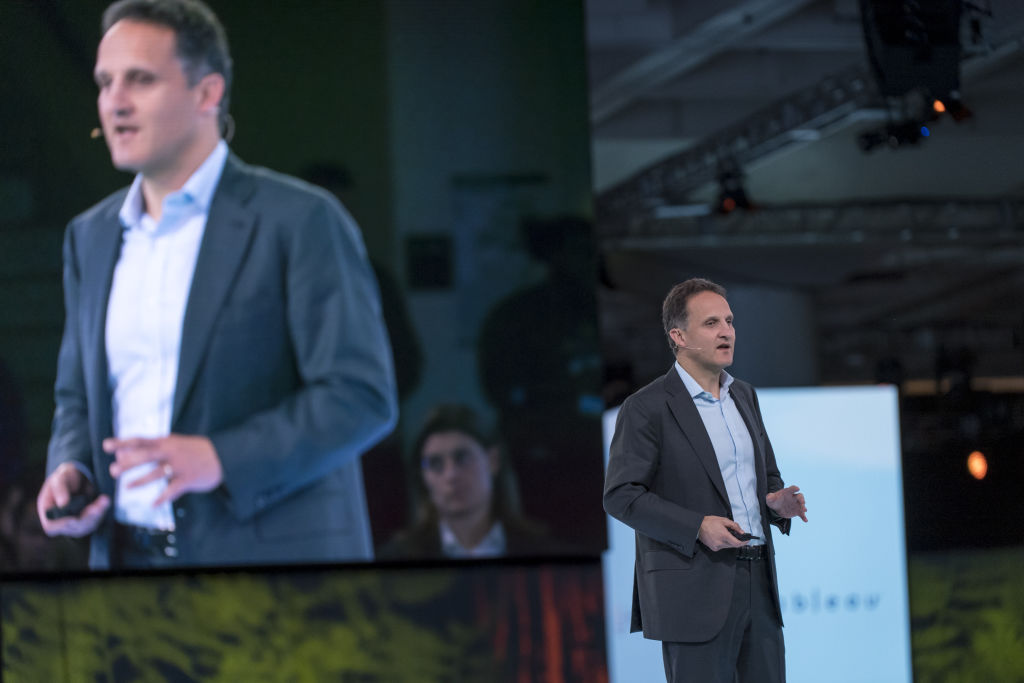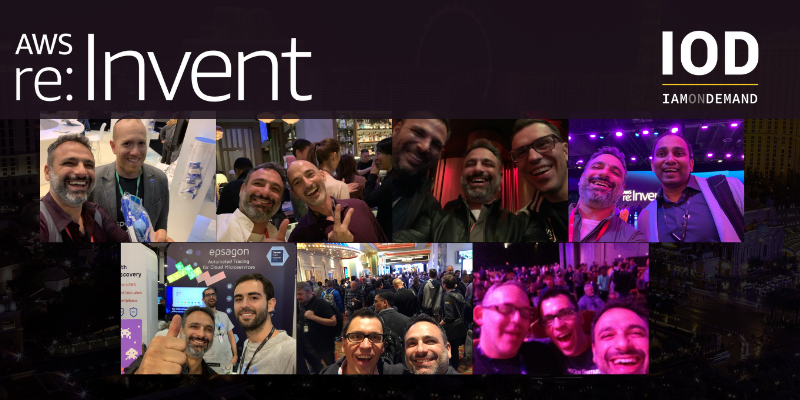This year marks 10 years of AWS re:Invent, and I am fortunate to say that I am one of only about 5,000 people that have been to all 10 of the re:Invent shows. Along the way, I’ve witnessed Amazon’s business grow more and more each year.
This year, we of course are fully aware of the presence of COVID-19 – and its effect on the biggest cloud event has been no different. In 2020, re:Invent was cancelled as an in-person event and instead went fully virtual. And while the virtual show was much larger, I feel that nothing compares to being on the show floor and meeting customers, partners, and friends in person. I could definitely save money by attending virtually, but I will miss out on the human factor of being there in person. And of course…I’m always happy to go back to visit Vegas once a year…
The conference this year will open up once again, although to limited participants. There will also be a virtual option for those unable to attend in person. I recall the very first re:Invent in 2012, where just 5,000 attended, and it’s been amazing to witness how much it’s grown since then. Close to 70,000 people attended AWS re:Invent 2019, pre-COVID. This year’s physical turnout will be more reminiscent of those early re:Invent years in terms of numbers, with just 10,000-15,000 attendees expected. In addition, the majority of attendees this year will be from the U.S.—as overseas visitors (from Europe especially) will be limited due to ongoing COVID-19 overseas travel restrictions.
Changes at the Top at Amazon
There have been changes at the top at Amazon that we’ll be keeping a close eye on. The first is that Andy Jassy has recently taken over as President and CEO of Amazon.

Jassy founded AWS in 2006, and served as its CEO from April 2016 until July 2021. Jassy led AWS to great heights during his tenure, and his tech background and role in the enormous growth of cloud computing around the world makes him a welcome choice for taking over Jeff Bezos’ chair as CEO of Amazon. AWS is a growth machine, as we all know, and it continues to be one of Amazon’s most profitable ventures, generating tens of billions of dollars in revenue for the company each year.
AWS’ revenue makes up 14.5% of Amazon’s total revenue of $110.8 billion. And for the first time ever, revenue from AWS, advertising, third-party seller services and Prime subscriptions ($55.9 million) surpassed revenue from Amazon’s retail and product sales ($54.9 billion).
The biggest change at the top, however, may be the beginning of the Adam Selipsky era as CEO of AWS. Selipsky replaced Jassy as the new CEO, and brings with him 11 years’ previous experience with AWS—including being a vital part of its initial launch team in 2006. Jassy has a long-standing trust in Selipsky, which is part of what makes him a logical choice to take over AWS. Selipsky left AWS in 2016 to take over Tableau as CEO, and after spending five years there, he now rejoins AWS.

Although AWS was smaller at the time Selipsky left than it is now, the company culture is still pretty much the same, so it’ll likely be a fairly smooth transition for Selipsky in his new role. As I have observed continually over the years, success in this role requires knowledge of the AWS culture, as well as a vision for the future. AWS continues to grow and is certainly not the same as it was, but the culture of innovation and ingenuity has remained largely the same.
At this year’s AWS re:Invent, Selipsky is set to be the event’s keynote speaker. I’m really curious to hear him speak. In addition to the usual anticipation and excitement of whether the company will announce something groundbreaking and new, I’d like to see what types of ideas he has for growth in the ever-changing and evolving market of cloud infrastructure.
My Expectations Surrounding the Future of AWS
AWS has gone from being focused almost exclusively on infrastructure to being a do-it-all vendor—and in the process is helping remove the need for companies to manage their underlying infrastructure, enabling them to also focus on the deployment and management of their applications.
Amazon is maturing and offering more and more specialized services such as their new blockchain framework service, Amazon Managed Blockchain. The cloud giant has been building a team of experts to strengthen its offerings in blockchain and digital currency, and they recently announced they’d accept Bitcoin as a form of payment on the AWS platform.
This all represents a natural evolution of an infrastructure vendor who supports customers’ requirement to provide “up the stack” services. By doing so, their customers don’t need to do the “heavy lifting” of building an entire infrastructure cluster for a generic blockchain environment. Another example of this is Amazon Honeycode, a spreadsheet-oriented, no-code development platform that builds mobile web and web apps.
I expect that this is only the beginning, and that there will be more machine learning use case services this coming year, along with traction into other emerging specializations in the tech world such as fintech, insurtech, and healthtech.
By offering companies these types of services on top of the infrastructure services that made AWS so formidable to begin with, they’ll provide startups and other growing companies the ability to innovate faster and more efficiently than ever before. The tradeoff here, of course, is the higher vendor lock-in level when it comes to utilizing such “up the stack” services.
Let’s Meet in Vegas!
This will be my tenth year at re:Invent, and I’m thrilled to be attending this year’s show in person, after only being able to attend virtually last year. This show should be a great one, with all of the new and exciting changes at the top at Amazon.
Looking forward to seeing you all there!
Don’t miss out on our tech experts’ predictions and hopes for this year’s edition of Amazon’s much-anticipated conference on all things cloud.







